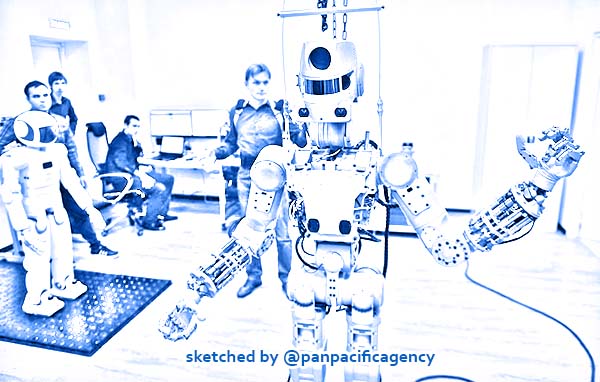Russian, Japanese companies plan to jointly design moon robot

MAGNITOGORSK, RUSSIA - DECEMBER 7, 2016: Testing the Russian humanoid rescue robot Fyodor at the Android Technics Scientific Production Association. The robot can be remotely controlled by a person in a special suit or work autonomously performing voice commands. Donat Sorokin/TASS. Sketched by the Pan Pacific Agency.
MOSCOW, Dec 14, 2019, TASS. Russia’s Android Technology Company and Japan’s GITAI startup plan to create a robot to operate on the lunar surface, the Russian company’s executive director, Yevgeny Dudorov, told TASS.
“Colleagues from Japan are thinking in approximately the same direction as we do, eyeing step-by-step design of robotic systems to explore the near and far space. We both identify the Moon – or, in other words, robotic systems that could function and perform tasks on the Moon surface – as our primary target,” he said.
According to Dudorov, GITAI specializes on anthropomorphic robots and uses controllers similar to those developed by Android Technology. The device allows to operate robots in the ‘avatar’ mode, during which it would mimic the actions of a human controller to perform certain manipulations.
The tentative agreement on cooperation was achieved when Japanese company representatives visited Russia this week.
“We will sign a cooperation agreement. Later, we will outline joint plans for 2020, 2021 and other years,” Dudorov said, adding that the deal would be signed soon.
Once the joint project is a success, the sides will present their developments to the national space agencies – Russia’s Roscosmos and Japan’s JAXA.
“We also discussed the possibility of GITAI’s use of engines that we produce. They have examined the materials and will probably use our electric engines to power their robotic systems,” Dudorov said.
Russian robots
Russia’s Android Technology Company, together with the Advanced Research Fund, created the Skybot F-850 android robot (previously called FEDOR – Final Experimental Demonstration Object Research), which flew to the International Space Station (ISS) aboard a Soyuz spacecraft in August-September.
Another project of the Russian company is Teledroid, a robot (not necessarily an anthropomorphic one) that would function on the outer surface of the ISS. The first prototype of Teledroid is expected by March-April 2020.
The company is also designing an anthropomorphic robot that would process radioactive waste in storage facilities and dispose of it. The trials of it are to begin in 2020.